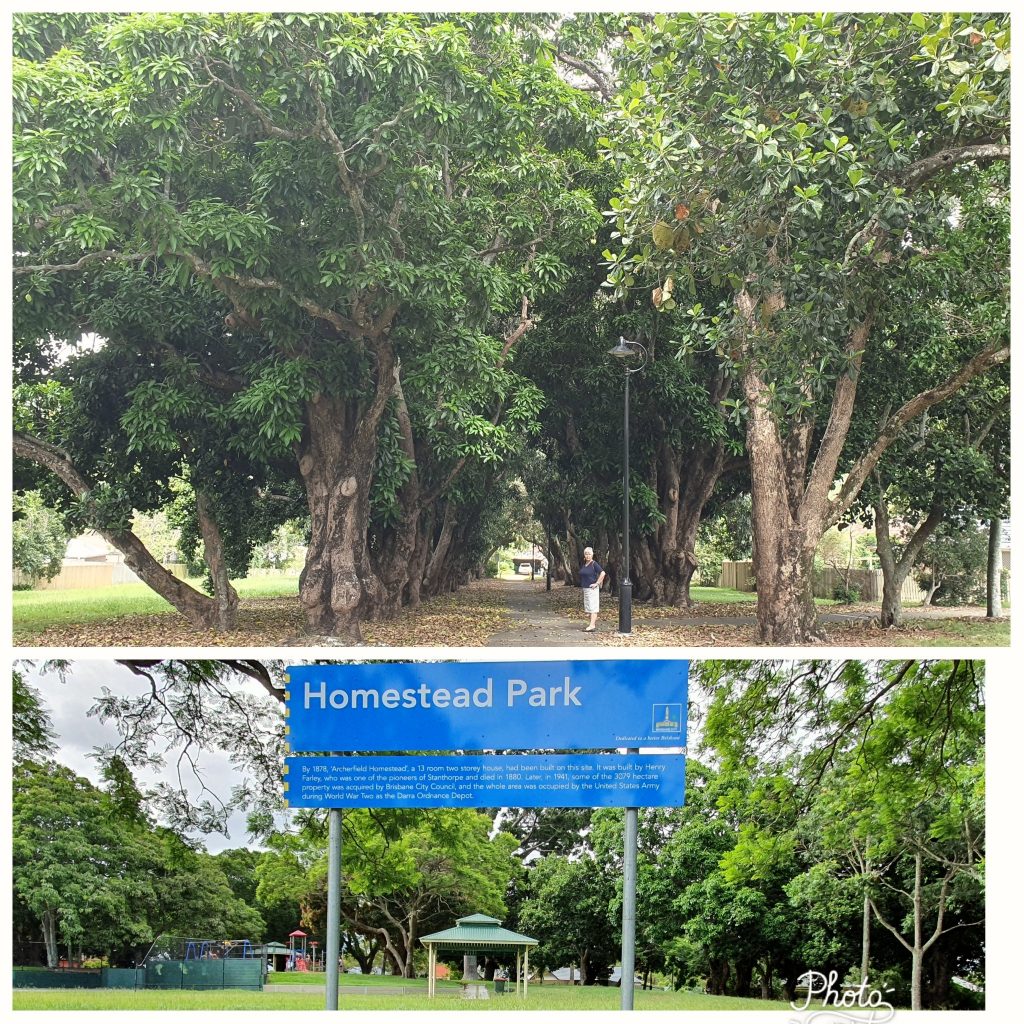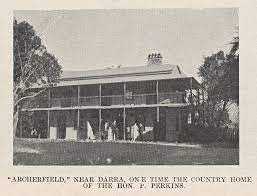
JIM GRINDLE’s home near Wacol Station was one. It became a Communications Centre for the United States Army, and the family moved in with the Grindles at Wolston House.
WILLIAM DYNE purchased 100 acres on the southern side of Ipswich Road at Wacol and settled there with his wife and family in 1917. The property contained some of the highest-grade sand available in Brisbane, and it was used as mortar in the construction of the City Hall.
The Sandy Creek area is not alone in its quality sand. The Blunder and Oxley Creeks share this gift. In 2002 a proposal to mine sand at the junction of these two water courses was rejected by the Local Authority, mainly on environmental grounds. It is not difficult to imagine these sandy pools surrounded by shady trees providing a resting place for weary travellers!
WILLIAM DYNE was a son of ALFRED ALBERT DYNE who owned a property in Archerfield Road between Boundary and Freeman Roads. This was the original Dyne residence, and there William grew up with his brothers ROBERT, GEORGE and PERCY, and sisters VIOLET, ALICE and MONA.

ARCHERFIELD HOUSE was another pioneer settler’s home to be taken over by the Americans. By 1942, the original home had been replaced by a smaller structure — the site of which is where the rotunda is today in Homestead Park, Forest Lake. The new occupants added other buildings on site to act as a kitchen and mess hall. The complex became the command centre for a very large Ammunition Storage area of about 6000 acres where the suburb of Forest Lake is today.
Much time had elapsed since MR FARLEIGH purchased the Archerfield property in 1859 and the American occupation. MR DURACK, a successful Irish immigrant, bought the property and lived there until 1888. Ownership then went to a ‘Sand and Coal Company’ as it was believed coal deposits were present. Being so close to Ipswich, this presumption was understandable! In 1936, the land was acquired by the Brisbane City Council for outstanding rates and was sold at public auction. By the time the Americans moved in, the property had fallen into disrepair.
Source: Tracing the historical significance of the Wacol Army Camp to the City of Brisbane, by Noel W. Wallis.
